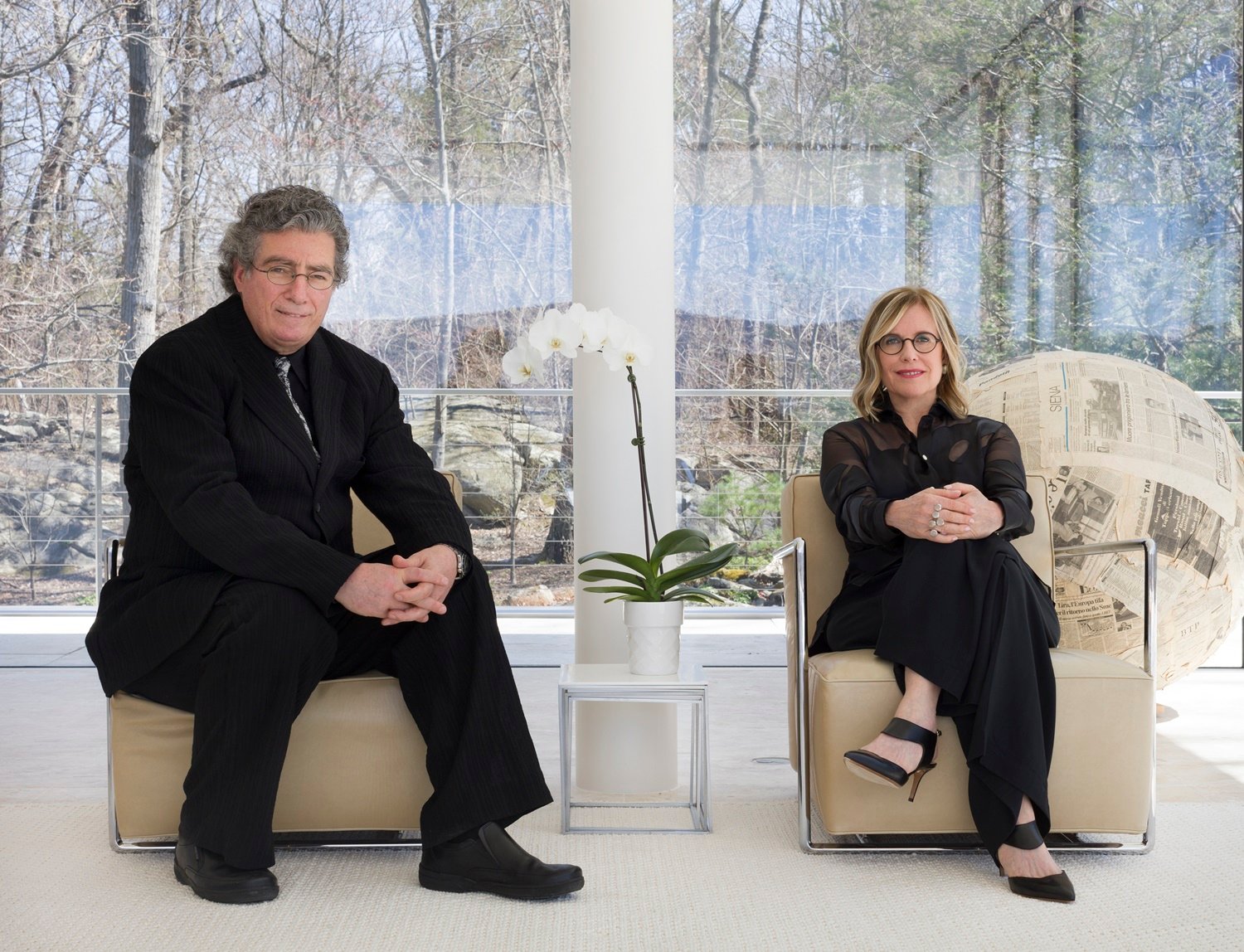
A new destination for postwar Italian art is opening this summer inside a former computer factory in the Hudson Valley, just north of New York City. Magazzino, which opens its giant warehouse doors to the public on June 28, will showcase the collection of Nancy Olnick and Giorgio Spanu, longtime residents of the nearby town of Garrison.
The inaugural show is dedicated to Arte Povera, the artistic movement that formed in late 1960s Italy, and pays homage to one of the group’s first advocates, the gallerist Margherita Stein. The show includes 70 works by more than a dozen artists she championed, including Alighiero Boetti, Giuseppe Penone, and Michelangelo Pistoletto. Also on view are works by artists of the next generation, such as Marco Bagnoli, Domenico Bianchi, and Remo Salvadori. Most of the works have never before been seen in the US.
Magazzino. Photo: Marco Anelli © 2017.
The industrial space was adapted by architect Miguel Quismondo, who has worked closely with Olnick and Spanu over the past decade to help install site-specific artworks at their home in Garrison. But while the couple has been collecting postwar and contemporary Italian art for almost 30 years, they weren’t always experts.
In a phone interview, Olnick, who comes from a real-estate developing family, explained that the couple’s passion started with a recommendation from the late dealer Sauro Bocchi, who was based in Rome, on one of her numerous trips to Italy with Spanu, who is Italian.
Magazzino. Photo: Marco Anelli © 2017.
“He said, ‘You should visit Castello di Rivoli, in Turin,'” she recalled, “and our trip there astounded and fascinated us. I had grown up among Pop art in New York in the 1960s. It was a time of turmoil and rebellion, student protests, and the Vietnam War, and it was great to see how the Italians responded to all of this, in a very conceptual way, with so much thought and exploration.” (Prior to diving headfirst into Italian art, Olnick and Spanu collected Pop and European Modernism respectively.)
Spanu, whose background is in marketing and software publishing and distribution, was no more aware of the movement than his wife, despite the fact that he is the artists’ countryman, he told artnet News. “As a matter of fact, when Sauro suggested we go to the Castello di Rivoli, I thought he was telling us to go to Vivoli, which is a whole different part of Italy!”
Decades later, a converted warehouse will be home to their 450-work-strong collection, as well as the couple’s library of 5,000 publications on Italian art. (Both will be free to visit by appointment.)
Magazzino. Photo: Marco Anelli © 2017.
Magazzino’s inaugural show traces the history of Margherita Stein, who opened her pseudonymous gallery Galleria Christian Stein in Turin in 1966. (She adopted her husband’s name, Christian Stein, in an effort to skirt sexism.) At the time, Arte Povera (“poor art” in Italian) was so new that it didn’t even have a name; critic Germano Celant would not christen the emergent movement until the year after Stein opened her gallery.
Alighiero Boetti, Giuliano Paolini, Margherita “Christian” Stein, and Gianfranco Benedetti, 1986. Courtesy Magazzino Italian Art.
“Our goal is to support Italian art, as well as international contemporary artists with strong ties to Italian culture with the same vigor as Stein demonstrated during her lifetime,” the space’s director, Vittorio Calabrese, said in a statement.
The new institution joins a growing number of private museums and exhibition spaces in the US. Magazzino, in fact, is the second private space dedicated to Italian art to open in New York in the past five years. In 2014, the collector Laura Mattioli opened the Center for Italian Modern Art in SoHo.
Marisa Merz, Untitled (2009). Photo Daniele De Lonti, courtesy Magazzino Italian Art.
The warehouse’s opening also coincides with a revival in interest in postwar Italian art. Hauser & Wirth will mount an exhibition dedicated to Arte Povera this September, while Gavin Brown closed his West Village gallery space in 2015 with a recreation of Jannis Kounellis’s legendary 1969 piece Untitled (12 Horses). Meanwhile, New York’s Metropolitan Museum of Art recently held an exhibition of Marisa Merz, Arte Povera’s sole female member, and New York’s Museum of Modern Art showed Boetti in 2012.
Michelangelo Pistoletto, Stracci Italiani (2007). Courtesy of Magazzino Italian Art.
But Magazzino’s exhibitions won’t focus only on the most familiar names. The couple also plans to put a spotlight on a new generation inspired by those major figures. Spanu points to the 10 artists they’ve already invited to mount projects in Garrison, including Domenico Bianchi, Paolo Canevari, and Bruna Esposito.
“Yes, we’ve seen attention to the best-known artists of the movement,” Olnick says. But she adds, “There’s a lot of work to be done.”